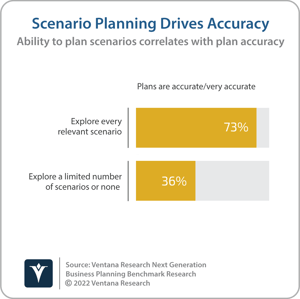I first wrote about a new era of trade a few years ago to make the point that the period of optimizing supply chains for the lowest cost was over, and that companies needed to redesign them to achieve greater resiliency. That observation proved correct. Now we are hearing about “the end of globalization,” a hyperbolic phrase describing the effects of ongoing changes to the international political order that have been underway for more than a decade. These changes are forcing companies to make sometimes significant adjustments to sourcing and supply chain management. Globalization, which started in 1492, isn’t over, but managing international trade requires the ability to deal with shifts in strategic planning assumptions and agility in dealing with tactical events. Software will play an important role in enabling corporations to meet these ongoing challenges caused by a major reordering of global trade.
 Adding to the complexity of managing supply chains is the increasing focus on environmental, social and governance issues, complicating decisions by adding another consideration regarding where and how goods are sourced. I assert that by 2025, over two-thirds of organizations will incorporate sustainability metrics in sourcing and supply chain selection criteria to support ESG efforts. Actions and policies in the political sphere will have an even greater impact on economic decisions, requiring even more adaptability in supply chain management.
Adding to the complexity of managing supply chains is the increasing focus on environmental, social and governance issues, complicating decisions by adding another consideration regarding where and how goods are sourced. I assert that by 2025, over two-thirds of organizations will incorporate sustainability metrics in sourcing and supply chain selection criteria to support ESG efforts. Actions and policies in the political sphere will have an even greater impact on economic decisions, requiring even more adaptability in supply chain management.
The signs of this new era of trade were visible in 2019 when I first wrote about changes in supply chain management. What had started with the world financial crisis of 2008-9 was, by then, a clear shift away from the post-World War II political norm of an increasing scope of multilateral trade treaties aimed at lowering tariffs and reducing barriers to trade. In its place has been an increasing fragmentation into sets of bilateral, trilateral and regional arrangements. This fragmentation and the increasing tensions over trade that grew in the ‘teens made it necessary for companies engaged in international commerce to reevaluate sourcing, purchasing and supply chain management to reflect a new environment that no longer supports a lowest-cost approach. Instead, the new conditions require greater weight placed on continuity and resiliency.
Until world trade was upended, supply chain management had been a tactical concern far removed from the focus of senior executives. However, as we expected, the ability to adapt quickly to changes in market and regulatory environments has become strategic, and resiliency has become a topic of national importance.
Sales and operations planning is a management discipline that enables executives to assess and manage trade-offs among multiple, interdependent business considerations: demand and supply market opportunities, customer service, inventory investments, production capabilities, supply availability and distribution constraints. Its objective is to produce a plan for managing the supply chain that best fits the company’s strategy and opportunities.
S&OP historically posed a technology challenge because of the large amount of information that needs to be processed and the heavy compute load caused by the need to resolve interdependencies within a big data set. Achieving resiliency in planning is difficult when resolving a plan takes hours or days. Accurately planning supply chains can be extremely difficult because of its complexity, involving a great variety of items – and their permutations – that must be addressed in the planning. These include suppliers, parts, products, manufacturing, distribution and store locations, desired inventory levels at locations as well as the volume of orders received and completed. Organizations that operate globally face additional issues that include the length of time it takes to source components or products, tariffs and taxes.
 Over the past decade, technology has advanced to the point where it’s possible to eliminate most of the latency in arriving at a decision. This enables supply chain managers to do more scenario planning to understand the implications of a potential event or trend, and to quickly provide decision makers with likely outcomes for a range of possible decisions. Our Business Planning Benchmark Research found that 73% of organizations that are able to explore all relevant scenarios have more accurate plans, compared to 36% that cannot.
Over the past decade, technology has advanced to the point where it’s possible to eliminate most of the latency in arriving at a decision. This enables supply chain managers to do more scenario planning to understand the implications of a potential event or trend, and to quickly provide decision makers with likely outcomes for a range of possible decisions. Our Business Planning Benchmark Research found that 73% of organizations that are able to explore all relevant scenarios have more accurate plans, compared to 36% that cannot.
Performing rapid iterations of scenario plans is necessary because it may take several iterations of a calculated plan to arrive at a workable solution, especially if there are considerations that cannot be explicitly modeled so organizations can consider the implications and discuss which option is best. Organizations with only moderately long or complex supply chains and those with long lead-time items must have software that enables contingency planning at a granular scale, with the flexibility to adapt quickly as events dictate.
-1.png?width=300&name=MicrosoftTeams-image%20(5)-1.png) Our research finds that one of the main S&OP challenges is data: 38% of companies said the necessary data isn’t available; another 15% said that the data isn’t accurate. One consequence of bad or unavailable data is that the resulting plans aren’t completely accurate. Fewer than one-third (29%) of companies characterized S&OP efforts as very accurate or accurate, while one-half (52%) described them as somewhat accurate. Somewhat accurate planning is like somewhat accurate juggling: There are a lot of dropped balls. Likely because it is complex, S&OP is a challenge for the majority of companies.
Our research finds that one of the main S&OP challenges is data: 38% of companies said the necessary data isn’t available; another 15% said that the data isn’t accurate. One consequence of bad or unavailable data is that the resulting plans aren’t completely accurate. Fewer than one-third (29%) of companies characterized S&OP efforts as very accurate or accurate, while one-half (52%) described them as somewhat accurate. Somewhat accurate planning is like somewhat accurate juggling: There are a lot of dropped balls. Likely because it is complex, S&OP is a challenge for the majority of companies.
Organizations with even moderately complex multinational supply chains are facing – and will continue to face – significant challenges in managing them. Dealing with competitive changes, new technologies, a market-driven proliferation of stock-keeping units (SKUs), the growing use of contract manufacturers and a proliferation of commerce channels is making supply chain management more difficult. Adding to the challenge is a more uncertain trade environment, unprecedented market volatility and the impacts and costs of ongoing legal, regulatory and taxation changes. Each of these factors makes it that much harder for organizations to reach good sourcing, purchasing and production decisions at a pace that maintains market share and profitability and achieves performance targets. In other words, it is challenging to be agile in supply chain management.
In this environment, senior managers and executives should evaluate how their organization is positioned competitively, taking an especially close look at the ability to produce dynamic contingency planning for the supply and demand chain. All managers and executives with planning responsibilities, and particularly those in organizations that are exposed to significant market volatility, should alert senior leadership teams regularly to opportunities and vulnerabilities. They also must ensure they have the planning tools they need – not only to anticipate change, but to benefit from it. I recommend that larger companies with even moderately complex supply chains assess the tools in use.
Regards,
Robert Kugel


 Adding to the complexity of managing supply chains is the increasing focus on environmental, social and governance issues, complicating decisions by adding another consideration regarding where and how goods are sourced. I assert that by 2025, over two-thirds of organizations will incorporate sustainability metrics in sourcing and supply chain selection criteria to support ESG efforts. Actions and policies in the political sphere will have an even greater impact on economic decisions, requiring even more adaptability in supply chain management.
Adding to the complexity of managing supply chains is the increasing focus on environmental, social and governance issues, complicating decisions by adding another consideration regarding where and how goods are sourced. I assert that by 2025, over two-thirds of organizations will incorporate sustainability metrics in sourcing and supply chain selection criteria to support ESG efforts. Actions and policies in the political sphere will have an even greater impact on economic decisions, requiring even more adaptability in supply chain management. Over the past decade, technology has advanced to the point where it’s possible to eliminate most of the latency in arriving at a decision. This enables supply chain managers to do more scenario planning to understand the implications of a potential event or trend, and to quickly provide decision makers with likely outcomes for a range of possible decisions. Our Business Planning Benchmark Research found that 73% of organizations that are able to explore all relevant scenarios have more accurate plans, compared to 36% that cannot.
Over the past decade, technology has advanced to the point where it’s possible to eliminate most of the latency in arriving at a decision. This enables supply chain managers to do more scenario planning to understand the implications of a potential event or trend, and to quickly provide decision makers with likely outcomes for a range of possible decisions. Our Business Planning Benchmark Research found that 73% of organizations that are able to explore all relevant scenarios have more accurate plans, compared to 36% that cannot.-1.png?width=300&name=MicrosoftTeams-image%20(5)-1.png) Our research finds that one of the main S&OP challenges is data: 38% of companies said the necessary data isn’t available; another 15% said that the data isn’t accurate. One consequence of bad or unavailable data is that the resulting plans aren’t completely accurate. Fewer than one-third (29%) of companies characterized S&OP efforts as very accurate or accurate, while one-half (52%) described them as somewhat accurate. Somewhat accurate planning is like somewhat accurate juggling: There are a lot of dropped balls. Likely because it is complex, S&OP is a challenge for the majority of companies.
Our research finds that one of the main S&OP challenges is data: 38% of companies said the necessary data isn’t available; another 15% said that the data isn’t accurate. One consequence of bad or unavailable data is that the resulting plans aren’t completely accurate. Fewer than one-third (29%) of companies characterized S&OP efforts as very accurate or accurate, while one-half (52%) described them as somewhat accurate. Somewhat accurate planning is like somewhat accurate juggling: There are a lot of dropped balls. Likely because it is complex, S&OP is a challenge for the majority of companies.








